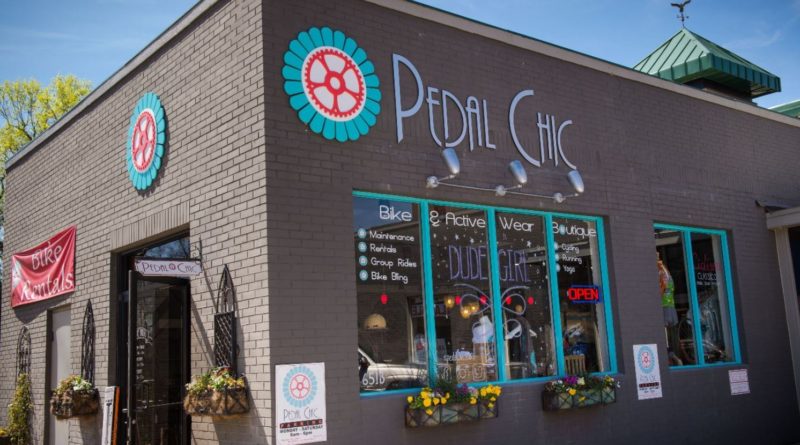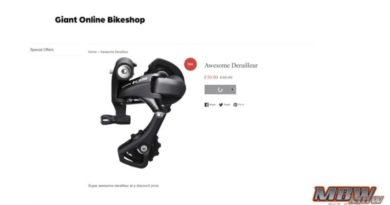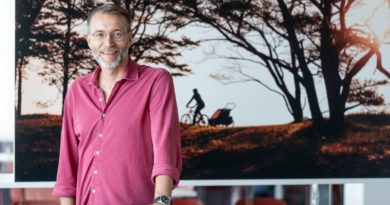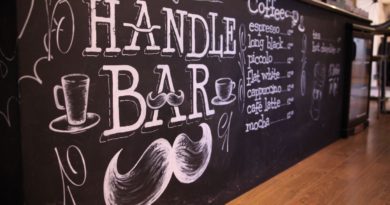“Women control 3/4 of spending, the bike industry needs to focus on them now”, says U.S. retail trailblazer

“Women over 50 years and older have 3/4 of the nation’s wealth, which totals about $19 trillion dollars.” You needn’t need much more information than that before assessing whether your store could do more to cater for female cyclists. CyclingIndustry.News speaks to Pedal Chic’s award-winning owner Robin Bylenga about her approach to women’s specific bike retail…
You’re something of a trailblazer in the US bike industry – tell us about your history in the bike world:
I started riding a very young age. That was my main mode of transportation and to this day I still have my first “Schwinn Varsity 10-speed” hanging in my garage. We now call that “vintage”. My greater entry into cycling was when I relocated to South Carolina to attend graduate school and began cycling long distance. I absolutely fell in love with riding through the mountains of our beautiful state.
Years later having had children and finding myself on my own again, I turned to the bike as my place of healing. Going on long rides was therapeutic for my mind, body and soul. Having always had corporate sales jobs – going to work at my LBS after a downsizing was such a joy. Once again, I fell in love with another element of cycling. Not just selling the bikes, but leading rides and teaching others to ride. That is why our motto at Pedal Chic means so much to me; “Transform by bike”. We believe the bicycle ride and experience is truly transformational as it was for me.
In 2003, I made a pitch to a cycling company with a design for women’s jerseys. It was way before the focus was on the female cyclist and my ideas weren’t well received. While working at the LBS, I pitched another idea to design a women’s section to focus on apparel and accessories that were more stylish and merchandising the department. This, too, was a bit before the market was ready. I had in my mind’s eye a boutique female-centric bike shop that had a blend between the hard goods and soft goods, merchandised in a more stylized and fashionable manner, yet providing a full-service maintenance area – complete with a crystal chandelier.
I left my LBS to go back into the corporate world. After the market crash, I found myself with few options. The idea of the women’s centric bike shop was pulling on me in a way that was almost tangible. I knew I had to at least try. Several months of work, research and diligence later, I opened Pedal Chic on September 1st, 2010 – and we were off!
What kind of growth do you foresee in the women’s cycling business in the next 5 to ten years?
As the national movement for multi-modal transportation grows, more “safe street” initiatives and the growth of global mobility, I foresee the women’s market growing exponentially. We must make our streets safer as fear is a major inhibitor for many women to take to the roads.
Once we can get women biking, in all genres, they will be engage their children to ride as well, which is so very important.
As retailers become more knowledgeable about what women want and how to sell to this demographic we will see massive growth in sales. Research data noted from a session at Interbike mentioned women over 50 years and older have 3/4 of the nation’s wealth, which totals about $19 trillion dollars. I would say that is a healthy market.
The products are now more readily available. We have infinitely more selection at more affordable prices. Attention is focusing (albeit at a slower pace) on creating safer places to ride. 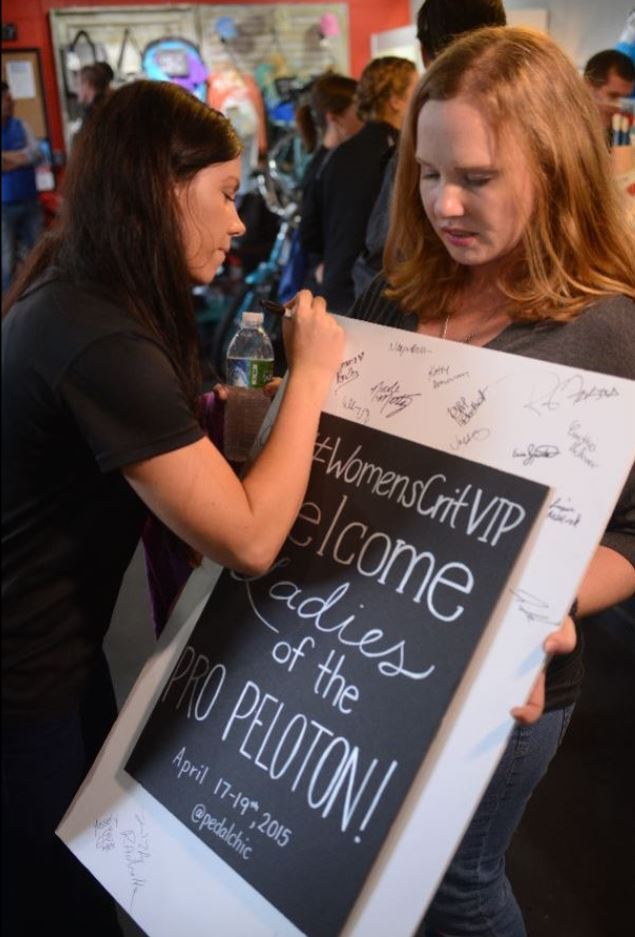
With your background, what sub-trends have you watched emerge in the women’s market over the years and what do you anticipate will be a growth area in future?
Just in the past few years we have seen many exciting, fashionable and functional designers enter the industry. This entails not just apparel, but accessories as well. The athleisure market was estimated to be a $20 billion market and the last data I looked over was that it was toppling over $40 billion already. This is a key relevant piece of information for our buying plan.
Urban markets are growing, trends toward the “share culture” are important to watch and I foresee the e-bike trend rapidly taking hold, especially as our customers begin to realize this isn’t a recreation, but rather a mobility issue.
In becoming a pioneer in female-focused bike retail, you’ve scooped awards and a customer base that travels from far and wide – had the US been missing an opportunity to tap into an under-served market?
Absolutely. Daily we have women (and men!) come into our shop after having read about us in a publication. We have even had customers make special trips worldwide just to visit our store. In my opinion, our industry has had a tendency to focus on one or two genres of the market. The time to focus on women has arrived. For years we at Pedal Chic have believed that to reach the vast women’s market, it is critical to “meet them where they are”. That includes social events, social media and lifestyle publications.
Since establishing a successful bike retail business you’ve gone on to become something of a public speaker – what do your talks entail?
When asked to speak, the audience is always taken into consideration, as is the desired takeaway. When our shop first opened, I was asked to speak as to the validity of the women’s market and how bike shops might be missing the opportunity. Thankfully, that topic has been justified.
Now, my topics include “How to Market to Women”, “How Women Buy Differently”, I co-authored a presentation at Interbike this year with Melissa Balmer of Pedal Love called, “The Art and Science of Selling Bikes to Women” which included the art of storytelling. I have spoken on a myriad of topics from entrepreneurship, merchandising and even how to set up a bicycle fashion show. The years we have spent collecting data and working almost exclusively with women have given me a great deal of insight that can’t be found in a focus group or on a survey.
Awards aside, you’ve generated some extensive mainstream press coverage – how have you built this interest and any marketing tips for others?
We believe in the value of branding, storytelling and staying in front our of our customers in ways other than just advertising. Pedal Chic is about building community. We have a story behind our brand, I have a personal story and we have been incredibly fortunate that they have resonated with our customers and have assisted in growing our reach and building our brand. We also encourage our clients to share their own bike experiences and transformations to inspire and encourage other women to join the community of Pedal Chic and biking.
Any key advice for bike shops out there on how to better serve female cyclists?
I would highly recommend hiring and training women for the floor. Observe, build relationships and engage and respectfully educate your clientele. Provide an opportunity to build “her” community. We frequently survey our customers to better serve their needs and make sure we are providing what they want. With social media, the platforms are always changing. It can be exhausting, but it is necessary in this era.
Failing that, hire me as a consultant?
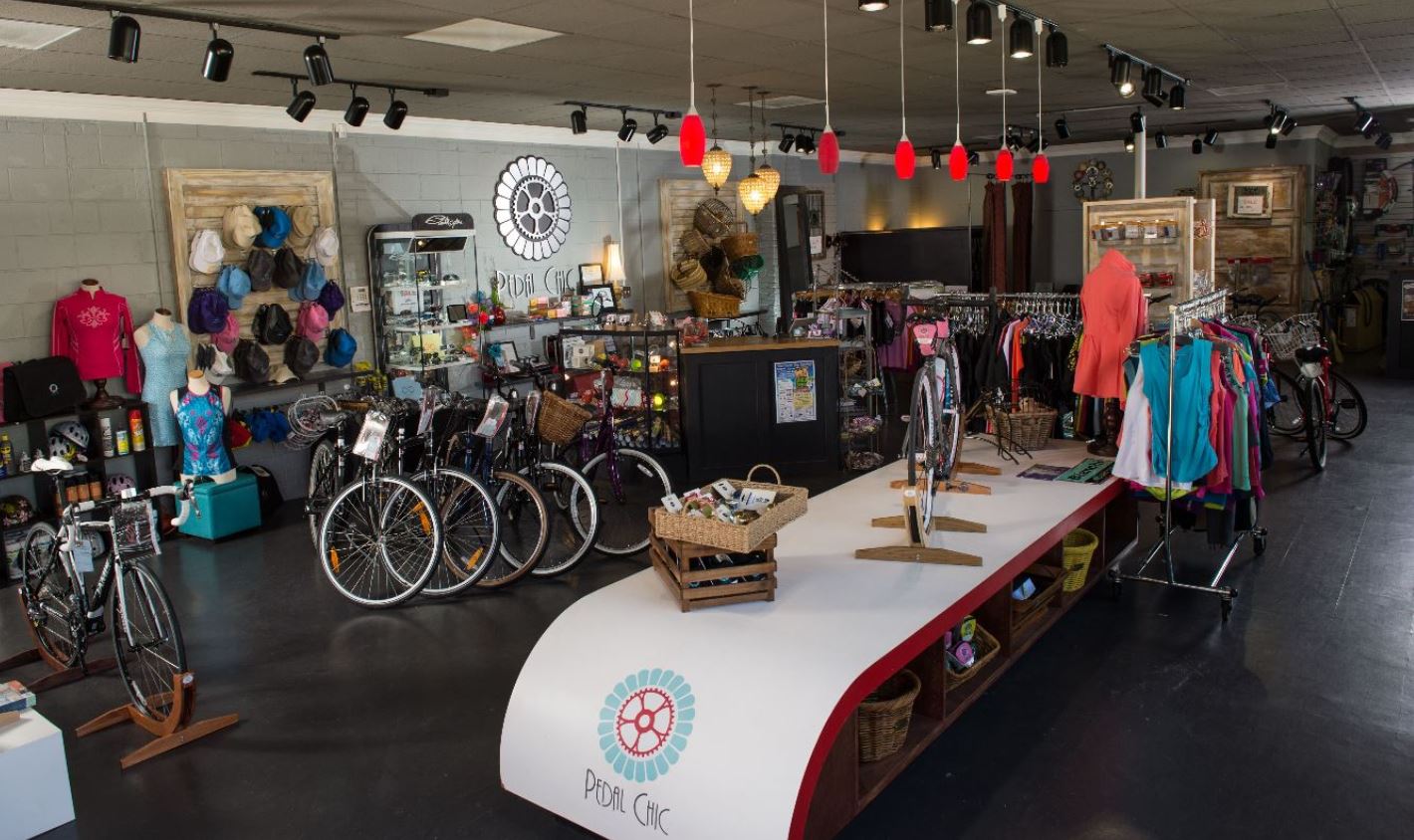 Staff interaction aside, how key is the retail experience to the female buyer – need it have a certain familiarity to mainstream stores?
Staff interaction aside, how key is the retail experience to the female buyer – need it have a certain familiarity to mainstream stores?
Experiential retail is the future. There is so much competition with other retailers and online – you must differentiate yourself and your brand. As for design tips, the floor must flow and telling the story to engage the cyclist you wish to reach. Consider the sensorial experience of the customer as well – which is a topic I address in consulting and speaking.
Have you in the past encountered any service issues yourself in other bike shops around the country?
For some reason the service area of bike shops has an overall “intimidation vibe” for the majority of women. It is simply learning to communicate properly without the air of arrogance that helps our female clientele learn and feel empowered. It’s very helpful to create an environment where questions are encouraged and answered in a respectful manner.
Personally, there have been times in the past where I was made to feel as if not knowing a mechanical element was somehow comparable to my ability to ride. Not cool. We have found that no matter the level or goals of the rider, the more we educate, the more confident she feels. And we are there to boost her confidence in whatever manner suits her, not us.
You engage in grassroots efforts to get the unconfident cycling – why is this important to your business?
It seems so much attention is given to the elite cyclist. We have worked very hard to “demystify” the world of cycling for those that wish to ride – no matter the level. Once you build someone’s confidence, they tend to ride more and come to events. Often, once they understand they upgrade too. We encourage customers to show up for community and/or group rides, events and to set personal goals. This in turn builds relationships, an exceptional experience, a community and a loyal customer. That is key to building business.
For independent dealers like yourself – what would you say your greatest challenges are?
I would say falling margins and the direct-to-consumer route from manufacturers. It simply astounds me when a rep comes in with a new product and almost brags about giving us a 33%-42% margin as if doing us a favour. The majority of retail operates on a keystone margin and boutiques operate even higher. We are continually challenged to find new ways to create business and to make margin while providing value to our clientele. Retail prices are skyrocketing and our business models as they stand currently cannot withstand the cost increases. That said, as the world changes, retailers must be willing to adapt and change as well.
And what would you count as the main threats to business at present?
The main threat is for an IBD to stay status quo and hope for things to get better. The change has to come within us, the retailers. There are so many dynamics IBD’s are facing. Everything is different than it was just a couple of years ago. Challenges include e-commerce, pricing structures, margins, rental rates, the changing consumer purchasing, and all the retail “noise” that challenge independent retailers to get their voice heard.
How are you adapting to a changing bike retail model?
We strive daily to keep our customer engaged in a retail experience that isn’t something they can find online. Our saddle fit, bike fit, special events, and customer communication programs are all parts of our strategic plan.
What are the key things the industry needs to  improve upon when design for and catering to female and newbie cyclists?
improve upon when design for and catering to female and newbie cyclists?
We always pay attention to proper fit, comfort (hands, saddle), and proper sizing. Women are especially sensitive to apparel sizing, so we strive to provide “true fit”. Safety features in new products we have seen of late resonate with all of our clients. Seeing new performance product that has a fashionable element has been long overdue and it is wonderful to be able to have choices. Cross-functionality of product (especially apparel) has been on the rise and as a retailer, it benefits us to be able to add value to our customers with a multi-use item.
Newbie cyclists tend to have sticker shock not only on the bike itself, but with the initial investment of items needed. It helps to have more affordable choices available on the market.
This article originally appeared in the Q1 2017 CyclingIndustry.News Trade Journal. In the UK bicycle trade and fancy a copy yourself? Sign up here.
